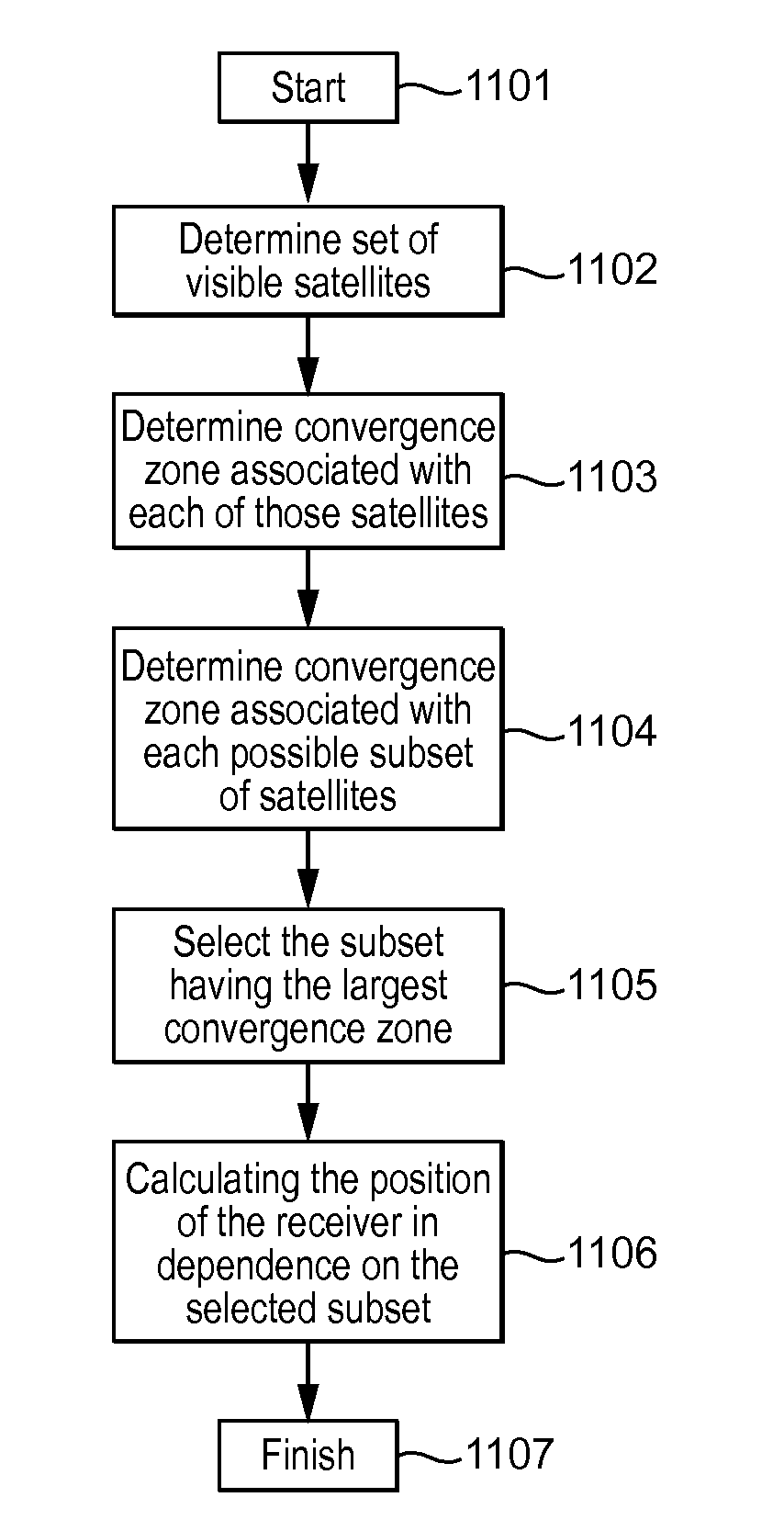Convergence Zone
a technology of global navigation satellite and receiver, applied in the direction of satellite radio beaconing, measurement devices, instruments, etc., can solve the problems of inability of the receiver to determine the distance between the satellite and the receiver with sufficient accuracy, and the receiver may also be unable to recognise the start of a sub-fram
- Summary
- Abstract
- Description
- Claims
- Application Information
AI Technical Summary
Benefits of technology
Problems solved by technology
Method used
Image
Examples
Embodiment Construction
[0052]An apparatus may be arranged to calculate the location of a receiver by means of a location algorithm that generates a receiver location in dependence on signalling events received from a set of satellites. The receiver may be able to receive signalling events from a plurality of satellites, representing the constellation of satellites that are visible to the receiver or a part thereof. The apparatus is preferably arranged to perform the calculation in such a way as to extend a convergence zone within which the algorithm is capable of generating the correct location for the receiver, despite an error in estimates of receiver location and absolute time that are used in the calculation.
[0053]One or more embodiments of the invention may be implemented in a satellite navigation or GNSS system, such as GPS, Globalnaya Navigatsionnaya Sputnikovaya Sistema (GLONASS), Galileo, etc. Therefore, while one or more embodiments of the invention are described below specifically in reference ...
PUM
 Login to View More
Login to View More Abstract
Description
Claims
Application Information
 Login to View More
Login to View More - R&D
- Intellectual Property
- Life Sciences
- Materials
- Tech Scout
- Unparalleled Data Quality
- Higher Quality Content
- 60% Fewer Hallucinations
Browse by: Latest US Patents, China's latest patents, Technical Efficacy Thesaurus, Application Domain, Technology Topic, Popular Technical Reports.
© 2025 PatSnap. All rights reserved.Legal|Privacy policy|Modern Slavery Act Transparency Statement|Sitemap|About US| Contact US: help@patsnap.com



